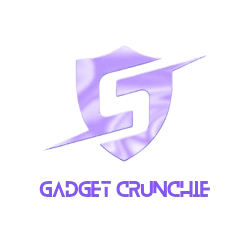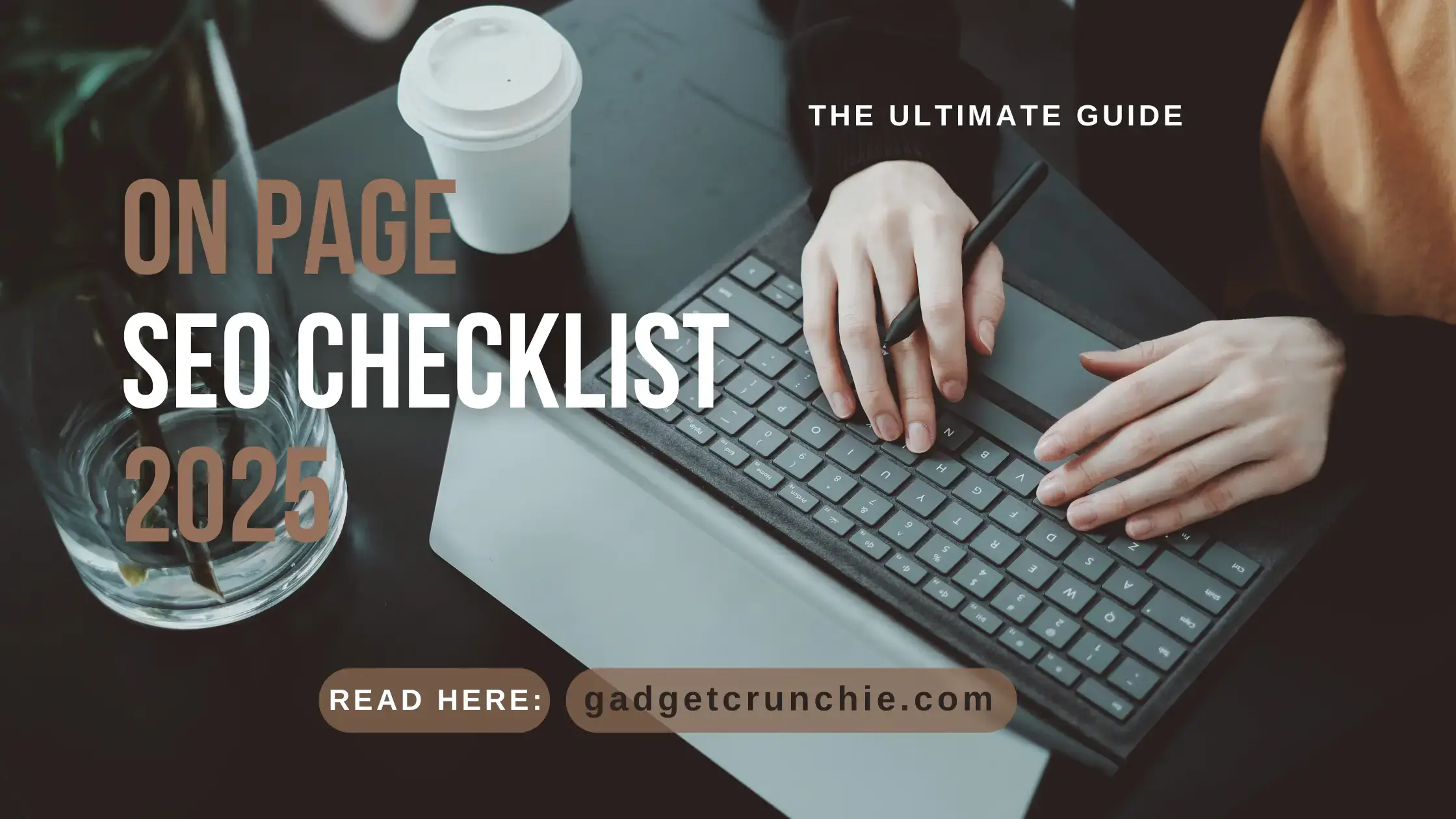On-Page SEO Checklist 2025: The Ultimate Guide
📌 Introduction
In 2025, on-page SEO is more dynamic than ever, with Google prioritizing AI-driven search intent, mobile-first indexing, and user experience signals. This easy-to-follow checklist ensures your website is optimized for higher rankings, better Core Web Vitals, and AI-powered SERP features like Featured Snippets and Perspectives.
Whether you’re a beginner or an advanced SEO, this guide covers keyword strategies, meta tags, image optimization, internal linking, and mobile UX—all updated for Google’s 2025 algorithm changes.

This comprehensive on-page SEO checklist ensures your website is optimized for Google’s 2025 ranking factors, including mobile-first indexing, Core Web Vitals, E-E-A-T (Experience, Expertise, Authoritativeness, Trustworthiness), and AI-driven search enhancements.
🔍 1. Keyword Research & Content Optimization
(Align with Google’s 2025 NLP & AI-driven search intent understanding.)
✅ Beginner Steps:
- Use AI-powered keyword tools (Ahrefs, Semrush, Google Keyword Planner) to find long-tail, conversational, and question-based queries.
- Optimize for semantic search – Include related terms, synonyms, and natural language.
- Check Google’s “People Also Ask” and “Related Searches” for content gaps.
- Target one primary keyword per page + 3-5 secondary keywords.
✅ Advanced Steps:
- Analyze competitor snippets and optimize for Featured Snippets (Position 0).
- Use AI content analysis tools (Frase, Clearscope) to ensure topic depth.
- Incorporate Google’s “Perspectives” algorithm by adding user-generated insights (quotes, expert opinions, case studies).
📝 2. Meta Tags & Structured Data
(Optimize for AI-generated SERP features like rich snippets and AI overviews.)
✅ Beginner Steps:
- Write compelling title tags (50-60 chars) with primary keyword near the front.
- Craft engaging meta descriptions (120-160 chars) with a CTA.
- Use schema markup (FAQ, How-To, Article, Breadcrumb) for rich snippets.
✅ Advanced Steps:
- Test AI-generated title variants for higher CTR (Google now personalizes SERPs).
- Implement entity-based SEO (markup for brands, products, events).
- Optimize for Google’s AI Overviews by structuring content in Q&A format.
Make sure your content includes relevant keywords and follows on-page SEO best practices. If you’re optimizing a business site, my SEO optimization services for small businesses can help you implement these strategies effectively.
🖼️ 3. Image & Multimedia Optimization
(Google now prioritizes interactive & immersive media in rankings.)
✅ Beginner Steps:
- Compress images (WebP format, <100KB for faster loading).
- Use descriptive alt text (include keywords naturally).
- Add image schema markup for visual search.
✅ Advanced Steps:
- Optimize for Google Lens & AI image search with structured captions.
- Use interactive media (360° images, short videos, AR previews).
- Lazy load images & videos for better Core Web Vitals.
📑 4. Content Structure & Readability
(Google now scores engagement depth – time spent, scroll behavior, interaction.)
✅ Beginner Steps:
- Use clear H1, H2, H3 headings with keywords (but avoid over-optimization).
- Break content into short paragraphs (2-3 sentences max).
- Add bullet points & numbered lists for skimmability.
✅ Advanced Steps:
- Optimize for Google’s “Helpful Content Update” (2025):
- Include author bios with E-E-A-T signals (credentials, experience).
- Add real-world examples & case studies for credibility.
- Use AI readability tools (Grammarly, Hemingway) for clarity.
⚡ 5. Core Web Vitals & Page Speed (2025 Requirements)
(Google now penalizes slow, non-interactive pages more aggressively.)
✅ Beginner Steps:
- Achieve LCP (Largest Contentful Paint) <1.2s (optimize hero images, fonts).
- Reduce CLS (Cumulative Layout Shift) <0.1 (set image dimensions, avoid dynamic ads).
- Ensure FID (First Input Delay) <100ms (minimize JavaScript).
✅ Advanced Steps:
- Preload critical resources (fonts, above-the-fold assets).
- Use Edge Computing (Cloudflare, Vercel) for faster global delivery.
- Implement Partial Prerendering (PPR) for instant page transitions.
If you’re starting, check out our Beginner’s Guide to Technical SEO for a deeper understanding of how site structure, crawlability, and indexing work.
🔄 6. Internal Linking & Site Architecture
(Google’s 2025 “Topic Authority” update rewards deep, well-structured sites.)
✅ Beginner Steps:
- Link related pages using descriptive anchor text (avoid “click here”).
- Use a silo-linking structure (group related content under hubs).
- Fix broken links (use Screaming Frog or Sitebulb).
✅ Advanced Steps:
- Implement AI-driven internal linking (LinkWhisper, Yoast AI Suggestions).
- Add predictive links (dynamic suggestions based on user behavior).
For official recommendations, you can refer to Google’s SEO Starter Guide to stay aligned with current best practices.
📱 7. Mobile-First & UX Optimization
(Google now uses “Mobile-Only Indexing” – desktop version is ignored.)
✅ Beginner Steps:
- Test mobile usability (Google Search Console).
- Use responsive design (no separate mobile URLs).
- Optimize touch elements (buttons >48px, no intrusive pop-ups).
✅ Advanced Steps:
- Implement accelerated mobile pages (AMP) alternatives (like Signed Exchanges).
- Use Google’s Interaction to Next Paint (INP) optimization for smooth scrolling.
🔎 8. Monitoring & Continuous Optimization
(SEO in 2025 requires real-time adjustments based on AI-driven SERP changes.)
✅ Beginner Steps:
- Check Google Search Console weekly for crawl errors.
- Monitor rankings (RankMath, SurferSEO).
✅ Advanced Steps:
- Use AI-powered SEO audits (SE Ranking, BrightEdge).
- Run A/B tests on meta tags & CTAs for higher CTR.
🎯 Final Checklist Summary (2025 SEO Must-Dos)
| Category | Key Action Items |
|---|---|
| Keywords | AI-optimized long-tail queries, semantic search |
| Meta Tags | Title, description, schema for AI overviews |
| Images | WebP, alt text, lazy loading |
| Content | E-E-A-T signals, readability, engagement depth |
| Core Web Vitals | LCP <1.2s, CLS <0.1, INP <100ms |
| Internal Links | Silo structure, AI-driven suggestions |
| Mobile UX | Mobile-first design, touch-friendly |
| Monitoring | Real-time SERP tracking, AI audits |
🚀 Next Steps:
- Run an SEO audit (Screaming Frog, Ahrefs).
- Optimize for AI search (structured data, Q&A format).
- Improve Core Web Vitals (speed, interactivity).
❓ FAQs
By following this 2025 On-Page SEO Checklist, your site will rank higher, load faster, and align with Google’s latest AI-driven ranking factors.

